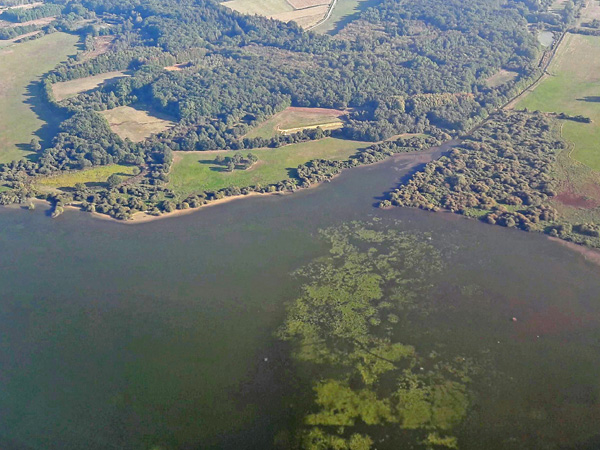Cyanobacteria blooms – a growing problem that should not be underestimated
Cyanobacteria blooms are a severe threat not only to ecological relationships in marine and inland water ecosystems but also to human health due to the ability of cyanobacteria to synthesise toxic metabolites. One of such blooms, massive and persistent (lasting for 125 days!), appeared in the spring of 2019 in the Stryków reservoir (Łódzkie Voivodeship, Poland) – an artificial water reservoir created relatively recently (in 1991) for recreational purposes. It was the subject of research, which has just been published in the International Journal of Environmental Research and Public Health. The authors of the publication, including Michał Adamski from our Institute, considered the enrichment of the reservoir waters with biogenic elements from intensive agriculture combined with high water temperature as the main reason for the persistence of the studied bloom. The concentration of cyanobacterial toxins in the water was so high that it seems necessary to impose restrictions on the further use of the reservoir as a recreation facility, especially since the risk of frequent and long-lasting blooms will increase with the projected global temperature increase. The authors call for strict compliance with the restrictions related to the so-called cyanobacterial alerts. This is particularly important during the holiday season when contact with water contaminated with cyanobacterial toxins is highly likely.
See the original article:
Nowicka-Krawczyk P., Żelazna-Wieczorek J., Skrobek I., Ziułkiewicz M., Adamski M., Kaminski A., Żmudzki P. 2022. Persistent cyanobacteria blooms in artificial water bodies – an effect of environmental conditions or the result of anthropogenic change. International Journal of Environmental Research and Public Health 19: 6990. DOI

Cyanobacteria bloom in a body of water used for recreational purposes (Nantes, France).
Photo: Ariel Kamiński.

Cyanobacteria bloom in a water reservoir in Nantes (France) as seen from a plane.
Photo: Ariel Kamiński.





